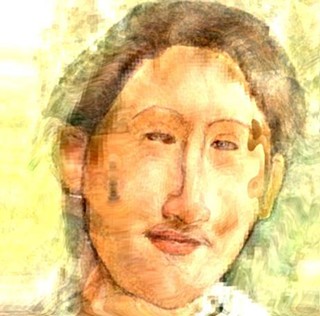He's the emcee of a traveling gig called Beatfest 2002. It's a cross-country tour with a jazz trio in a Pontiac Vibe, fostering new words and music inspired by the Beat generation--1950s writers like Jack Kerouac, Allen Ginsberg, Gregory Corso, Gary Snyder and Lawrence Ferlinghetti. They rejected the era's middle-class lifestyle and values, and would hang out in nightclubs or take long road trips, expanding their consciousness in pharmaceutically interesting ways and writing and reading from-the-gut outsider poetry.
Kerouac derived the term "beat" from the word "beatific" if you believe the scholarly sources, or, if you believe his novel On the Road, from the notion that his generation was beaten down and wrung out, a depression that may have had as much to do with alcohol consumption as existential angst. He didn't use "beat" in the musical sense, but the movement was closely identified with bebop, the progressive music that, as far as older fans of swing were concerned, wrenched jazz out of the mainstream.
"The Beats considered themselves outsiders," said Glazner, who got his own poetic start writing dirty limericks to make his classmates laugh, thereby learning that poetry can elicit a visceral response. "Lots of people still get into poetry now by reading the Beat poets, and they're attracted to that glamorous outsider lifestyle. Of course, those guys weren't really outsiders; they all became college professors, except for Corso, who was too drunk to teach. But they brought a lot of energy to their readings, and that's what they have in common with slam poetry."
Glazner is a leading exponent of slam, which is potentially rowdy performance-based poetry competition. He lives outside Santa Fe, and has found excuses to visit Southern Arizona several times over the past dozen years. He's especially fond of Bisbee, where, he just learned to his delight, they serve absinthe by the gallon if you go to the right parties, and where he started his career by winning $300 in the 1990 Bisbee Poetry Festival's "Jump the Border" poetry performance contest.
That same year, Glazner produced the first National Poetry Slam in San Francisco, and two summers ago he organized SlamAmerica, a cross-country bus tour featuring over 100 poets in 37 slams in 32 cities over 30 days. Compared to that, the current 17-city, 17-day Beatfest in a donated Pontiac "is like a vacation to me," he said.
"This is a very strange moment in history when a car company comes to poets and musicians and wants to support their arts," he said. "But it sorta makes sense, because the audience that comes to slams is the same young, well-educated, financially secure group of people who buy cars. And Pontiac isn't pushing us to do poems with the word 'chrome' in them; they just want us to do stuff that's fun and hip."
The tour launched April 11 from the Knitting Factory in New York, and will dock with performances April 27 to May 4 at the Knitting Factory in Los Angeles. In between, Glazner will travel with Bill Ware's downtown Manhattan jazz trio Vibes, conducting Beat-themed slams.
"Vibes will kick it off with a 30-minute set, then after a short break I'll do a little work with them, reading either a Beat poem or some road poems I've done," Glazner explained. "Then we'll spotlight a local poet, and then go into the slam. Any of the poets can read by themselves, or have the band work with them. The band will improvise the tone based on the poetry; they're gonna have to do Middle Eastern music or jazz or blues at the drop of a hat.
"I'm there to be like the rodeo clown, who makes people laugh between the bucking-bronco parts, but who also is there to rush out the moment before somebody's gored."
The goal, Glazner said, is not really to reproduce the 1950s Beat experience, about which he has certain doubts anyway. "The Beats always talked about how depressing those years were, but look at the jazz scene, look at Tennessee Williams, look at the abstract painting in New York at that time. They had Elvis Presley and Marilyn Monroe--for God's sake, what were they complaining about?
"The Beats were sincere in their stance as outsiders, but I think it was somewhat misguided. You're going to have an impact on society only if you see yourself inside it, and today's slams aren't separate from society. You have a poetry reading and charge money at the door, so everybody who comes has a job. Oh, that's something else that's great about slams. Even big authors who do regular readings and signings at bookstores usually find themselves off in a corner alone, but these slams draw a really good audience."
For Beatfest's Tucson stop, the audience will be drawn to the Mat Bevel Institute, where the facility's eponymous performance artist keeps a warehouse full of surreal headgear and found-object sculpture. "I've read in Katmandu and Stockholm and Paris, and there's no place like the Mat Bevel Institute," Glazner raved. "It's a gem, totally unique.
"And that kind of ties in with how strong the poetry scene is in Tucson and how unique the poets' voices are here. There's a real storytelling quality to the work I've seen in Tucson. Out of our whole tour, I know the Mat Bevel show will be our best, because of the poets and the audience and the setting."








